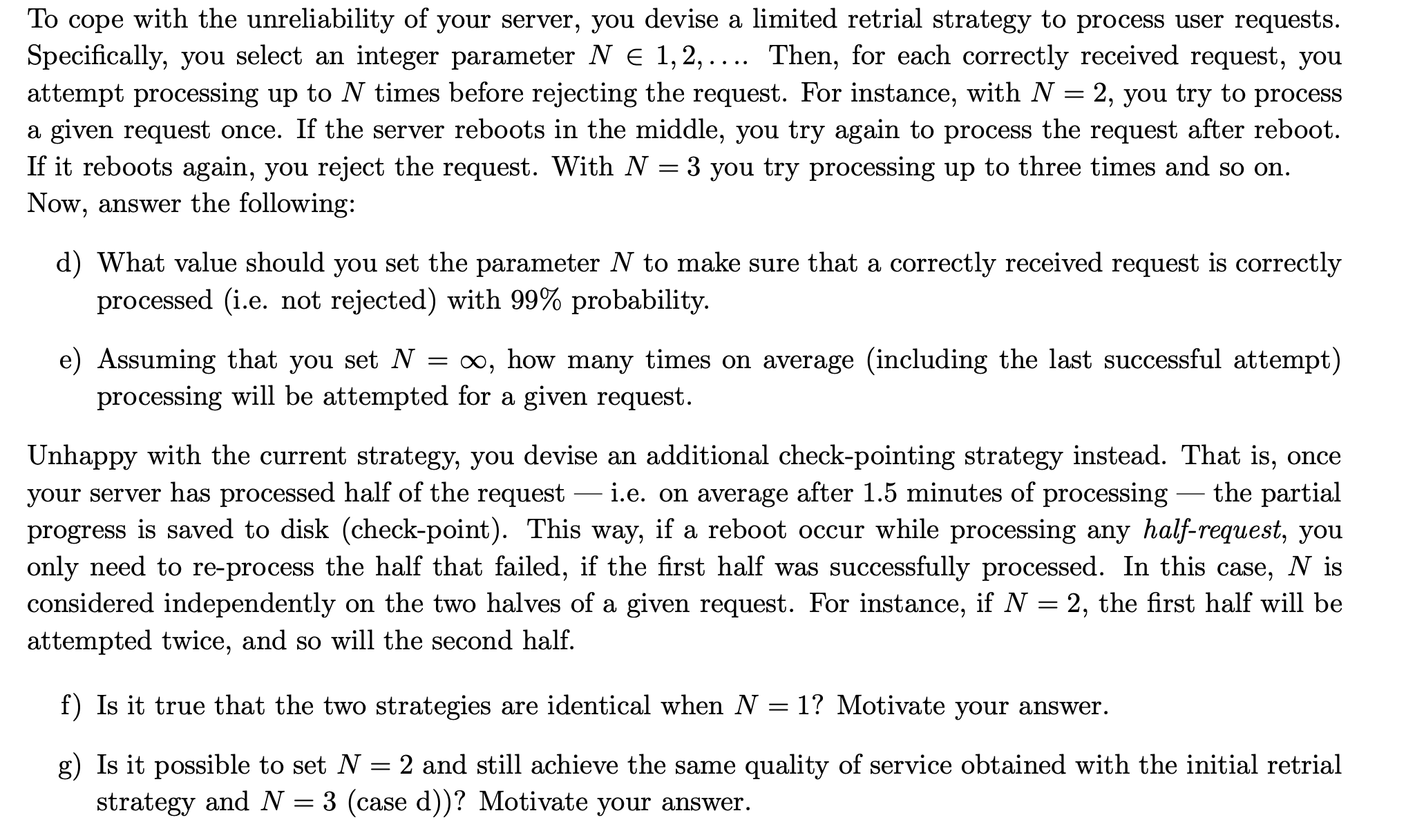Answered step by step
Verified Expert Solution
Question
1 Approved Answer
You just bought a fresh new server from an eBay auction from the user noSnake Oil. To your surprise, the server is affected by


You just bought a fresh new server from an eBay auction from the user noSnake Oil. To your surprise, the server is affected by intermittent, random reboots. You have computed the MTBF as 8 minutes and you know that you can compute the reliability of the server (i.e. the probability that the server will be up for a continued time window of length t) as R(t) = e-t/MTBF. The server takes 2 minutes to reboot. You want your server to process requests from users. Each request takes 3 minutes (on average) to complete. Because you know that the machine is unreliable, if the request arrives when the server is up, you log the request on disk before initiating processing. If the request arrives when the server is down, the request is lost. Moreover, if a reboot occurs in the middle of processing, the whole progress (but not what has been logged on the disk) is lost and the request needs to be re-computed from scratch. Whenever a request has been completed, the result is logged on disk so that it is preserved across reboots. You can assume that the data on the disk is always correct. First off, figure out the following: a) What is the probability that a new request will be lost? b) How many subsequent requests on average will be correctly received (but not necessarily processed!) before one is lost? c) What is the probability that a correctly received request will complete processing the first time the system attempts to process it? To cope with the unreliability of your server, you devise a limited retrial strategy to process user requests. Specifically, you select an integer parameter N E 1,2,.... Then, for each correctly received request, you attempt processing up to N times before rejecting the request. For instance, with N = 2, you try to process. a given request once. If the server reboots in the middle, you try again to process the request after reboot. If it reboots again, you reject the request. With N 3 you try processing up to three times and so on. Now, answer the following: = d) What value should you set the parameter N to make sure that a correctly received request is correctly processed (i.e. not rejected) with 99% probability. e) Assuming that you set N = , how many times on average (including the last successful attempt) processing will be attempted for a given request. Unhappy with the current strategy, you devise an additional check-pointing strategy instead. That is, once your server has processed half of the request i.e. on average after 1.5 minutes of processing the partial progress is saved to disk (check-point). This way, if a reboot occur while processing any half-request, you only need to re-process the half that failed, if the first half was successfully processed. In this case, N is considered independently on the two halves of a given request. For instance, if N = 2, the first half will be attempted twice, and so will the second half. = 1? Motivate your answer. f) Is it true that the two strategies are identical when N g) Is it possible to set N = 2 and still achieve the same quality of service obtained with the initial retrial strategy and N = 3 (case d))? Motivate your answer.
Step by Step Solution
There are 3 Steps involved in it
Step: 1

Get Instant Access to Expert-Tailored Solutions
See step-by-step solutions with expert insights and AI powered tools for academic success
Step: 2

Step: 3

Ace Your Homework with AI
Get the answers you need in no time with our AI-driven, step-by-step assistance
Get Started


